Jacques Cousteau
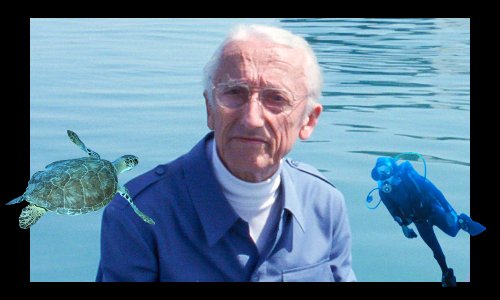
Lived 1910 – 1997.
After co-inventing the breathe-on-demand valve for SCUBA diving, Jacques Cousteau led hundreds of marine expeditions, making three Oscar winning documentaries. His pioneering television series The Undersea World of Jacques Cousteau promoted human understanding of ocean life and its intelligence, with Cousteau and his crew doing things never seen before, such as swimming with whales, caressing octopuses, and being pulled along by giant turtles. He was the first person to propose that cetaceans, such as whales and porpoises, use echolocation to navigate.
Earliest Years
Jacques-Yves Cousteau was born on June 11, 1910 in Saint-André-de-Cubzac, near Bordeaux, in France. He learned to swim when he was just four.His father, Daniel Cousteau, was an international lawyer. His mother, Elizabeth Duranthon, was the daughter of a wealthy local wine merchant and landowner.
The family lived in New York, USA when Jacques Cousteau was aged 10 to 12 years old. He learned to speak English fluently and improved his swimming and snorkeling. At summer camp in Vermont he started diving as part of the camp’s policy of cleaning up the nearby lake, beginning his life-long love of swimming below the water, even though he had no goggles at that time.
When the family returned to France, they moved to the Mediterranean city of Marseilles, where Cousteau snorkeled in the warm sea around the city. He also bought a movie camera, which he took apart and reassembled, learning how it worked mechanically.
Concerned at their son’s lack of academic progress and lack of discipline (he had gone on a window-smashing spree) his parents sent him to a tough boarding school in France’s Alsace region. The strong discipline worked wonders for the boy.
Advertisements
Beginning a Life at Sea
In 1930 Cousteau passed the tough exams for the French Naval Academy in Brest, where he trained for two years before spending a year at sea.In 1933 he was commissioned as a second lieutenant and spent most of the next two years sailing the world’s seas.
In 1935 Cousteau started training to become a naval aircraft pilot. He had almost completed his training when, in 1936, he was involved in a near-fatal car crash. Traveling too fast on a bend, his car left the road. He was paralyzed on his right side and broke a dozen bones, including multiple fractures in both arms.
Surgeons thought it best to amputate his paralyzed right arm, which had become infected. Although the infection was life-threatening, Cousteau insisted his arm should not be amputated. He survived, but his career as a pilot was over.
After months of therapy, much of it spent swimming to increase the strength of his shattered bones, he became a naval gunnery instructor.
Cousteau now swam daily to strengthen his arms. He improvised a pair of early swimming goggles from aircraft pilot goggles and swam down to explore the sea floor. The beauty of the sea-floor and its flora and fauna made such a deep impression on him that he decided he wanted to make diving his life’s work.
World War 2: Despair, Spying, and Inventing the Diving Regulator
Despair
In the early part of World War 2 Cousteau was serving as a gunnery officer when French ships bombarded the Italian naval base at Genoa close to the border between France and Italy. Cousteau thought of his Italian friends and felt deep despair about what he had to do.After France surrendered, the southern part of France lived under the Vichy regime – a French government that cooperated with the Nazis, causing more despair for Cousteau.
Spying
Before the war began, Cousteau had been recruited into France’s intelligence service. Cousteau stayed in France during the war and worked in Resistance operations against Italy’s intelligence services. After the war ended, Cousteau was awarded the Military Cross 1939-1945, ‘with palm and two citations.’Marine Cameraman and Film Prize
During the war years, Cousteau also began the work for which he would become world-famous. In 1942 he and his friend Marcel Ichac took an underwater camera to the waters around the Embiez Islands in the French Mediterranean. They made a film undersea called 18 Meters Deep. The following year, the pair were awarded an arts prize for their work.Inventing the Diving Regulator
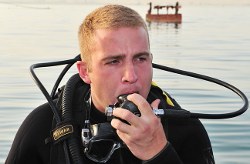
A diver breathes through his regulator, checking it is working properly before diving.
Cousteau had earlier experimented with breathing pure oxygen rather than air, hoping this would allow him to remain underwater longer. However, oxygen toxicity at depths below 45 feet caused him to lose consciousness; he abandoned the idea of breathing pure oxygen.
Cousteau then tried to find a better way to control air flow to the diver.
The demand regulator had been invented in 1942 by Émile Gagnan, a French engineer, to control gas flow in engines. The demand regulator only allowed gas through ‘on demand,’ not continuously.
Cousteau saw the potential for such a valve for divers: air would only be fed to them when they breathed in, and so their supply would last longer. Cousteau made suggestions to Gagnan about modifying his valve.
And so, in 1943, the diving regulator or aqualung was born, co-invented and patented by Gagnan and Cousteau.
Cousteau immediately incorporated the new device into SCUBA apparatus. It gave him exactly what he wanted, clearing the path for him to swim freely under the ocean’s surface. There was no longer any need for the incredibly restrictive heavy helmet, diving suit, and air tube going back to ship that had made diving such a cumbersome activity in the past. He said:
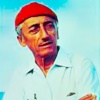 “From this day forward we would swim across miles of country no man had known, free and level, with our flesh feeling what the fish scales know.”
“From this day forward we would swim across miles of country no man had known, free and level, with our flesh feeling what the fish scales know.”
Jacques Cousteau
Initial Research
After the war ended, Cousteau began underwater research for the French Navy. In 1947 he set a new depth record for a free diver, descending 300 feet under the sea.In addition to military work, such as mine clearance, in 1948 Cousteau used his new SCUBA equipment for underwater archeology work, exploring a sunken Roman wreck in the Mediterranean off the coast of Mahdia, in Tunisia.
In 1951 Cousteau took scientific leave from the Navy and began his own sea expeditions.
Cousteau, Marine Science, Conservation and Television Documentaries
All Aboard Calypso
Cousteau shared his plans to make undersea film documentaries with wealthy British philanthropist Thomas Loel Guinness.
Jacques Cousteau’s expedition ship, Calypso, became so well-known that model makers, such as Revell, began making kits for people to build their own scale-models of the ship.
In 1950 Guinness bought a former car ferry and leased it to Cousteau, who was now 40-years-old, for a token 1 franc a year.
The ship’s name was Calypso. Like Cousteau, it was destined to become familiar to TV audiences all over the world.
Although he now had a ship at virtually no cost, Cousteau needed to equip it and crew it. This was terribly expensive, and Cousteau begged for government grants and pleaded with manufacturers for free equipment.
To raise more money, he and Frédéric Dumas coauthored the 1953 book The Silent World, a book about their pioneering adventures in SCUBA diving.
The book was an instant hit, and has continued to sell; to date it has sold over 5 million copies. In the book, Cousteau made the first ever suggestion that members of the whale family are able navigate using echolocation. He deduced this from observing their behavior entering the Straits of Gibraltar.
Two Movie Oscars
In 1956 Cousteau released his first color movie documentary, called, like his earlier book, The Silent World. This movie forever changed people’s ideas about the oceans and the life they contain. Today, most of us have seen plenty of undersea footage, but until Cousteau released The Silent World, only a tiny number of people had any idea of what the undersea world looked like. The movie won Cousteau the 1957 Academy Award for Best Documentary.A lot of marine life was killed during filming of The Silent World, including many sharks and a baby whale (by accident). In more recent times Cousteau has been criticized for this, although, given that he became one of the world’s greatest advocates of marine conservation, he must have come to regret the deaths.
After the film’s release, there was huge demand for SCUBA equipment, including Gagnan and Cousteau’s diving regulator. Cousteau had captured the world’s imagination. A great many people desperate for adventure were inspired by Cousteau to take up SCUBA diving.
Cousteau officially retired from the French Navy in 1956 with the rank of Captain.
In 1960, the year of his fiftieth birthday, Cousteau’s new documentary, The Golden Fish, won the Academy Award for Best Short Film. In the same year, he was featured on the front cover of Time Magazine. In his interview with Time, Cousteau predicted that one day people would have gills surgically added to enable them to live underwater.
In 1961 President John F. Kennedy presented the National Geographic Society’s Gold Medal to Cousteau.
Conshelf Sea Bases and, Remarkably, a Third Oscar
In 1963 Cousteau explored the possibility of establishing manned bases on the sea-floor, where divers could become ‘oceanauts.’The bases, the Conshelf bases, were partly funded by French oil companies who were interested in exploring the sea-floor. In the end, Cousteau decided he would rather work in conservation than oil-exploration and abandoned the idea. Nowadays, sea-floor exploration is carried out at lower cost and lower risk using underwater robots.
The documentary Cousteau made about establishing the Conshelf bases, World Without Sun, won him his third Academy Award, for Best Documentary, in 1965.
The Undersea World of Jacques Cousteau
In the years 1968–76 Cousteau produced probably his best known work, the TV documentary series The Undersea World of Jacques Cousteau. It ran for eight seasons, with some narration from Cousteau himself in his uniquely French accented English. The programs described the undersea adventures he and Calypso’s crew were having and the marine species they were observing. The crew by now included his sons, Philippe and Jean-Michel. The Undersea World of Jacques Cousteau inspired yet another new generation of divers and marine biologists.The Presidential Medal of Freedom
In 1985, on Cousteau’s 75th birthday, President Ronald Reagan presented him with America’s highest civilian honor, the Presidential Medal of Freedom. That same year, Cousteau had invited Cuba’s leader, Fidel Castro, for dinner on Calypso and persuaded him to release 80 political prisoners.Some Personal Details and the End
Cousteau married Simone Melchior when he was 26 years old, on July, 12 1937. They had two sons, Jean-Michel and Philipp. Simone always traveled with Cousteau on Calypso and once even sold her jewels to buy fuel to keep the ship at sea.Simone died of cancer in 1990.
In 1991, Cousteau, who was by then in his eighties, married Francine Triplet. They already had a daughter, Diane, and a son, Pierre-Yves, born in the early nineteen-eighties, while Cousteau was still married to Simone.
Near the end of his life, Cousteau had a legal battle with his son, Jean-Michael, over his son’s wish to use the Cousteau name for commercial purposes.
Jacques-Yves Cousteau died of a heart attack on June 25, 1997 in Paris, aged 87. He was buried in his family’s vault in the village of his birth, Saint-André-de-Cubzac. His village renamed the street which led to the house he was born in “Rue du Commandant Cousteau” or, in English, “Commander Cousteau Street.”
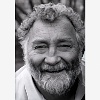 “He opened the eyes of the world to the wonders and problems of Earth’s own inner space and gave all divers the challenge to join him in that campaign.”
“He opened the eyes of the world to the wonders and problems of Earth’s own inner space and gave all divers the challenge to join him in that campaign.”
David Bellamy
Botanist, Naturalist, Broadcaster
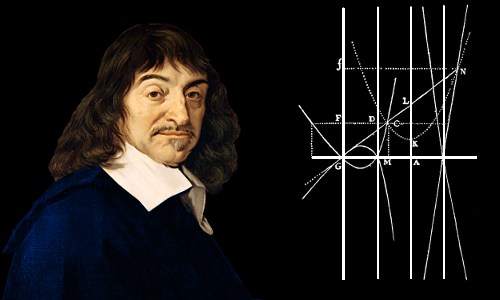
No comments:
Post a Comment